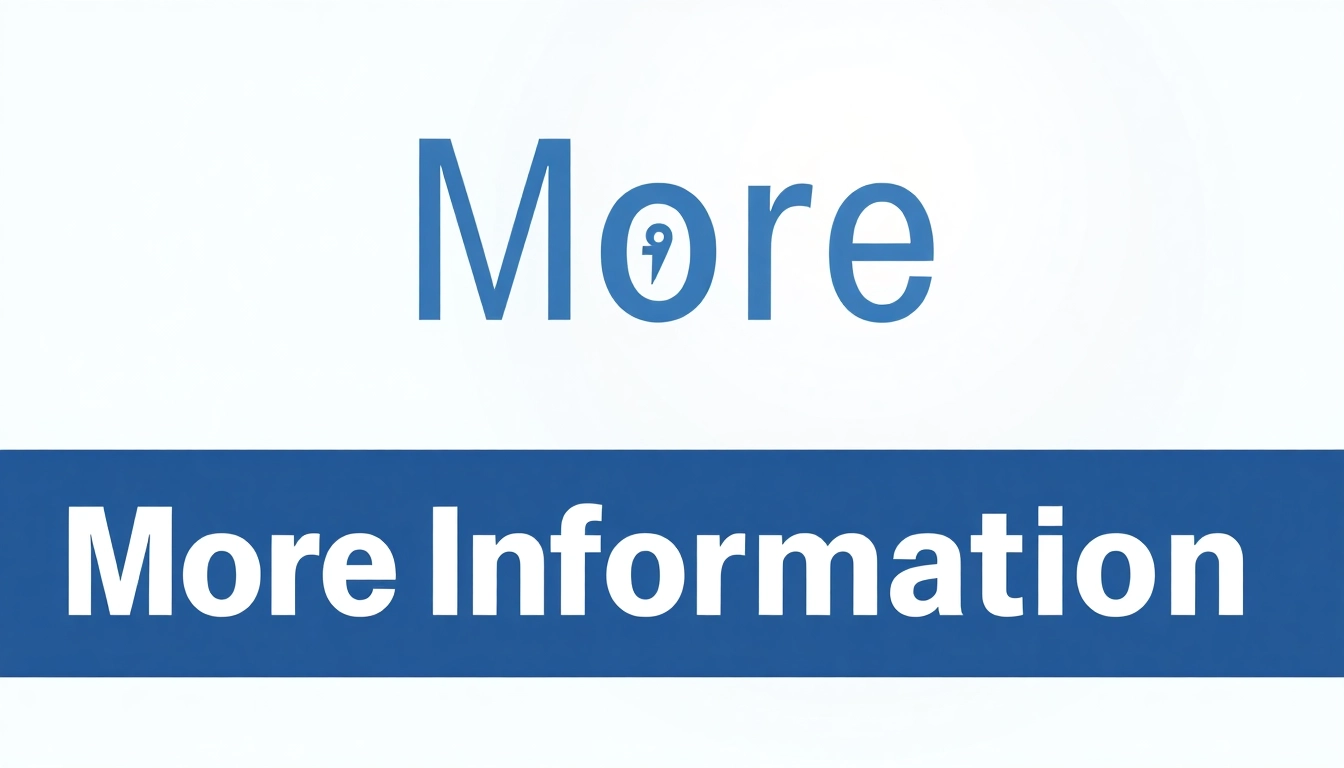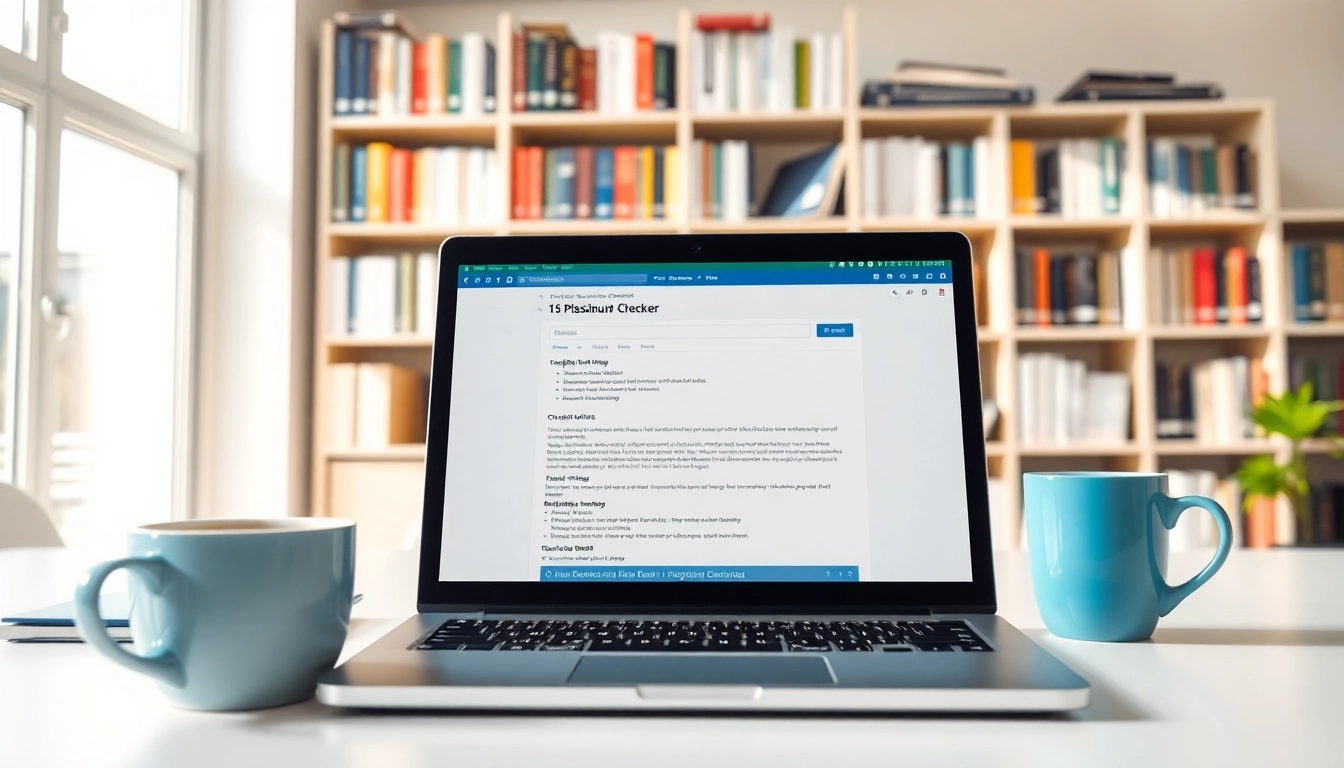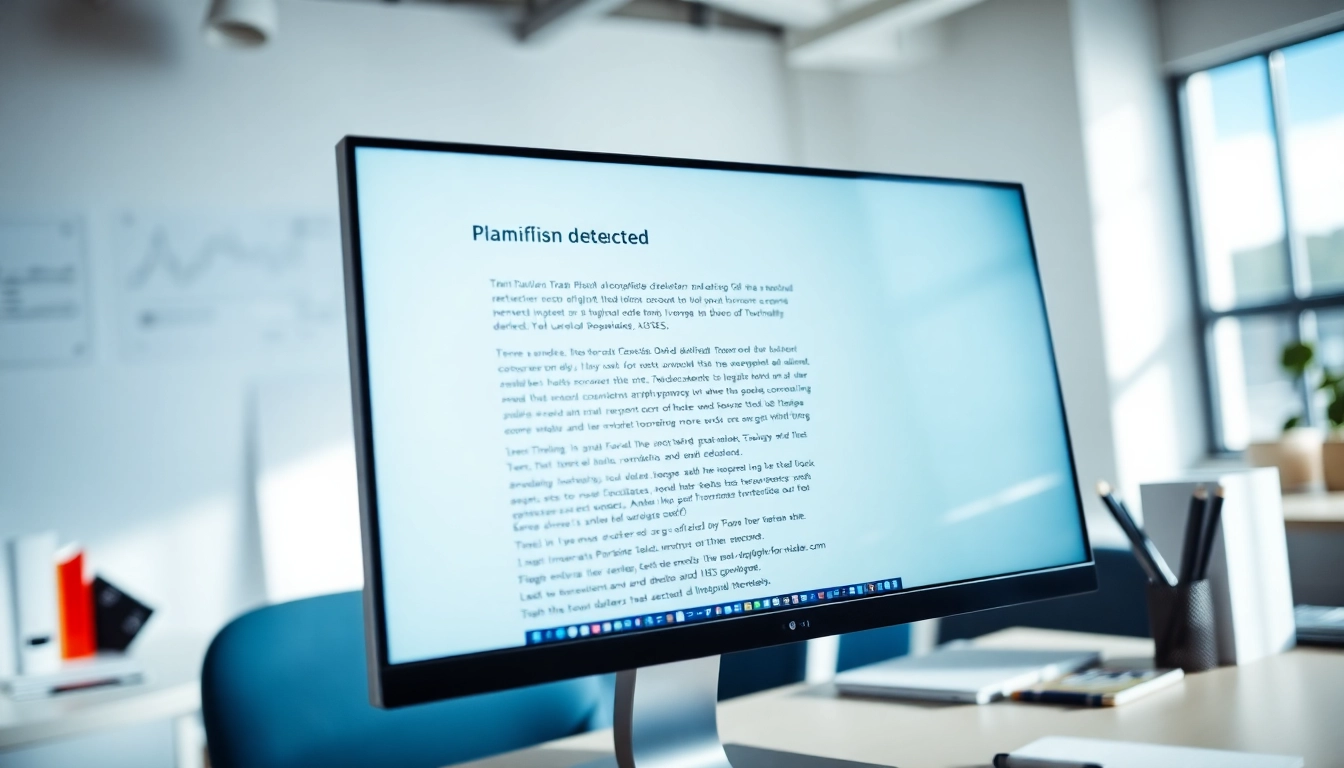Understanding the Need for More Information
In today’s digital age, the demand for accurate and comprehensive information is more critical than ever. Whether it’s for personal knowledge, professional growth, or academic endeavors, having access to reliable information can significantly enhance decision-making processes. This article delves into the various aspects of obtaining more information effectively. For a deeper exploration into this subject, you can refer to More Information on specific topics.
1. Defining Information Accuracy
Information accuracy is paramount in any research or inquiry. It determines the reliability of conclusions drawn from the data. Inaccurate information can lead to flawed decision-making, often with serious repercussions. Therefore, establishing the accuracy of information should be the first step in any research effort. Key factors influencing accuracy include:
- Source Credibility: Verifying whether the information comes from established, reputable sources.
- Data Recency: Ensuring that the information is up-to-date, as outdated information may no longer be relevant.
- Corroboration: Checking facts against multiple sources helps confirm the legitimacy of the information.
2. Recognizing Reputable Sources for More Information
Identifying reputable sources is a crucial skill in research. Reliable sources typically include:
- Academic Journals: Peer-reviewed articles published in established journals are often rigorously vetted for accuracy.
- Government Websites: Official government sites (e.g., .gov domains) provide factual and relevant information across various topics.
- Established News Organizations: Well-known news outlets usually employ professional journalists and fact-checkers, offering reliable reporting of current events.
3. Understanding Different Types of Information
Understanding the type of information needed can streamline the research process considerably. Key types include:
- Statistical Data: Quantitative information typically derived from surveys and studies.
- Qualitative Analysis: Descriptive data that provides context, utilizing interviews and focus groups.
- Historical Information: Information that pertains to past events, crucial for context in many fields such as law, history, and social sciences.
Where to Find More Information
With a plethora of resources available, knowing where to look can vastly enhance your information-gathering skills. Below are several reliable avenues:
1. Online Databases and Libraries
Online databases and digital libraries have revolutionized how we access information. These platforms offer an extensive range of materials, including e-books, scholarly articles, and academic papers. Popular platforms include:
- Google Scholar: A free web-based search engine indexing scholarly articles across an array of disciplines.
- JSTOR: A digital library providing access to thousands of academic journals, books, and primary sources.
- PubMed: A specialized database focused on life sciences and biomedical topics, ideal for research in the medical field.
2. Utilizing Social Media for Real-Time Updates
Social media platforms can serve as valuable tools for obtaining real-time information and updates. Scientists, journalists, and influencers often share information on platforms like:
- Twitter: Following reputable individuals and organizations can provide quick updates on emerging events and findings.
- LinkedIn: A professional networking site that showcases industry insights and expert opinions.
- Reddit: Subreddits dedicated to specific topics often have engaged communities sharing credible information.
3. Leveraging Academic Journals
Academic journals are some of the most reliable sources for in-depth research and findings. They are typically peer-reviewed and contain meticulous research. Accessing these journals through institutional libraries or platforms like ResearchGate can provide invaluable insights that are not available in mainstream publications.
How to Analyze More Information
Once information is gathered, the next step is analysis. Critically evaluating data helps separate fact from opinion and determines its relevance. Here are several strategies:
1. Tips for Evaluating Source Credibility
Determining if a source can be trusted is crucial. Consider the following criteria:
- Authorship: Look for information about the author. Consider their credentials, affiliations, and history of expertise in the field.
- Publication Type: Peer-reviewed journals are generally more credible than personal blogs or unverified online articles.
- Fact-Checking: Use websites like Snopes or FactCheck.org to confirm controversial statements or dubious claims.
2. Understanding Bias and Perspective
Every piece of information can have an inherent bias. Understanding the author’s perspective is essential:
- Contextual Awareness: Recognize the circumstances under which information is presented to grasp possible bias.
- Diverse Perspectives: Consulting various sources can help balance views and provide a more comprehensive understanding.
3. Fact-Checking Strategies
Fact-checking is a necessary skill in an era where misinformation is rampant. Utilize the following methodologies:
- Cross-Referencing: Always check facts against credible sources.
- Using Fact-Checking Websites: Leverage dedicated fact-checking organizations that specialize in verifying claims.
- Expert Contacts: Reaching out to experts in the field can clarify misunderstandings and provide authoritative answers.
Effective Communication of More Information
Once research is completed, the next step is effective communication of findings. This ensures the information is impactful and comprehensible:
1. Structuring Information for Clarity
A clear structure is key to effective communication. Consider using:
- Outlines: Use a clear outline to direct readers through your information logically.
- Headings: Employ headings and subheadings to break up text and highlight key points.
- Bullet Points: Utilize bullet points to summarize information succinctly.
2. The Role of Visual Aids in Presenting Information
Visual aids enhance comprehension and retention of information. Effective visual aids include:
- Charts and Graphs: These simplify complex data, making it more digestible.
- Infographics: Infographics combine visuals with key information, providing a quick overview.
- Videos: Engaging videos can illustrate concepts that might be difficult to convey through text alone.
3. How to Tailor Information to Your Audience
The effectiveness of your communication often depends on your audience. Consider:
- Audience Knowledge Level: Adjust the complexity of information based on the audience’s familiarity with the topic.
- Interests: Understand your audience’s interests to frame information that resonates with them.
- Feedback: Actively seek feedback to improve future communication based on audience insights.
Enhancing Your Research Skills for More Information
Improving research and analytical skills can significantly enhance the quality of information gained. The following steps can help:
1. Building a Research Framework
A structured research framework promotes efficiency and thoroughness. Elements to include in your framework are:
- Objectives: Define what you aim to achieve with your research.
- Methodologies: Decide on the research methods that best suit your objectives.
- Resource Allocation: Plan how to best utilize your time and resources.
2. Developing Critical Thinking Abilities
Critical thinking is essential for analyzing and evaluating information. Strategies to enhance critical thinking include:
- Questioning Assumptions: Regularly challenge your assumptions to avoid confirmation bias.
- Considering Alternatives: Assess multiple viewpoints and solutions.
- Reflective Thinking: Regularly reflect on your thought processes and decisions to find areas for improvement.
3. Continuous Learning and Information Literacy
Staying updated in an ever-evolving information landscape requires continuous learning. Consider regularly participating in:
- Workshops and Seminars: These can offer learning opportunities and expert insights into specific topics.
- Online Courses: Platforms like Coursera and edX provide valuable courses on research methodology and data analysis.
- Reading Publications: Subscribe to academic journals or newsletters to keep abreast of the latest research trends.
In conclusion, the ability to find and analyze more information effectively is an invaluable skill in today’s fast-paced world. By understanding the nuances of information accuracy, knowing where to search, analyzing sources critically, and employing effective communication strategies, individuals can significantly improve their information-gathering capabilities. Moreover, enhancing research skills through a structured approach will ensure continuous growth and adaptability in an ever-changing information landscape.















Leave a Reply